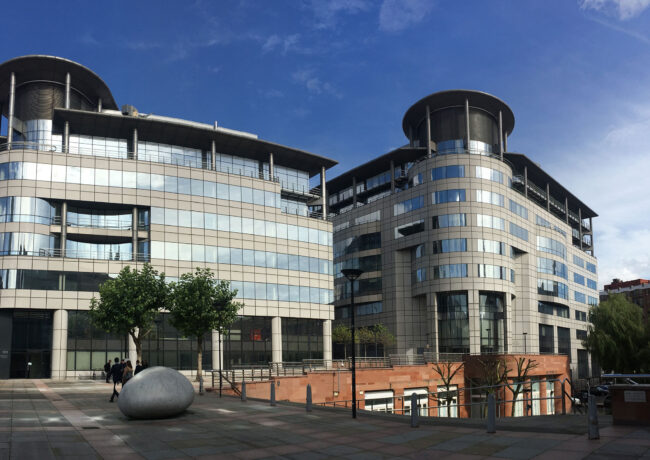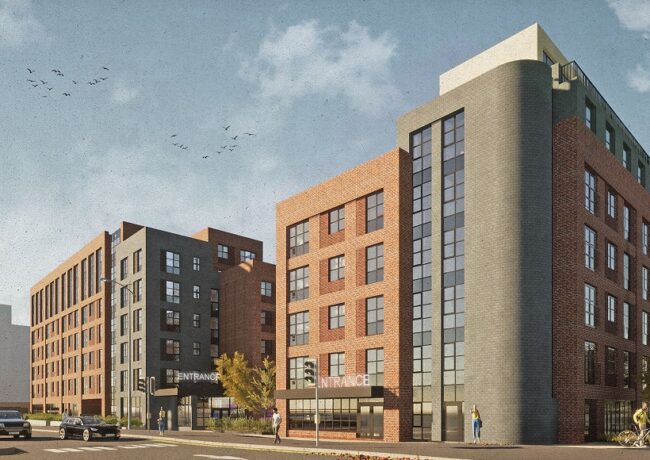MOAF: Manchester office take-up slips in Q1
The city recorded just over 234,000 sq ft of lease transactions in the first three months of 2021, a decline year-on-year and from the previous quarter amid still-challenging market conditions.
Total office take-up in Q1 reached 234,258 sq ft, down from the 349,513 sq ft in the fourth quarter of 2020, and 306,000 sq ft in the year-earlier period, according to the latest figures from the Manchester Office Agents Forum. Still, the market is maintaining “gradual momentum” as real estate and the general economy recovers from the pandemic, MOAF said.
Notable city centre transactions in Q1 2021 included the Ministry of Justice taking 24,548 sq ft at the Redfern Building, part of the Noma district; serviced office provider Orega taking 29,864 sq ft at Arkwright House on Parsonage Gardens, and law firm Brabners taking 20,239 sq ft at 100 Barbirolli.
South Manchester was the best-performing office market, where take-up totalled 92,797 sq ft – in line with the 94,838 sq ft recorded in Q4 2020 and well above Q3 2020’s total of 39,174 sq ft.
Salford Quays showed further signs of positivity with take-up totalling 66,877 sq ft, up from Q4 2020’s total of 52,626 sq ft, according to MOAF. The organisation includes both Salford and Manchester cities in its research.
Despite a challenging 2020 in which total office take-up fell below 1m sq ft for the first time since 2013 – standing at 800,000 sq ft – the Manchester market saw a surge in activity in the final three months of the year as deals exceeded 350,000 sq ft, up from 69,000 sq ft in the previous quarter.
The slight drop in the first quarter of 2021 can be attributed to “the third lockdown bringing an element of negativity to the start of the year”, said Rhys Evans, associate director at JLL on behalf of MOAF. Despite this, there has been a notable increase in viewing activity over the past month, he added.
“Businesses have been quietly evolving over the past 12 months, forming new strategies on how they may occupy space, with sustainability, wellbeing and flexible working high on the agenda,” Evans said.
“With the easing of lockdown restrictions on the horizon and an eagerness to reconnect with colleagues and workspaces again, we’re confident take-up will continue to improve moving forwards throughout the year.
“We’re seeing historic larger requirements in the market remerge with reduced sizes but with renewed certainty around the type of space they need.”
Accounting firm Grant Thornton’s deal with Barings Real Estate to lease 13,000 sq ft at Landmark in January “is a prime example, demonstrating a desire for best-in-class space to inspire collaboration, innovation and overall user experience for staff and clients alike moving forwards”, he said.
The deal achieved a new headline rental of £38.50 / sq ft – testament to the resilience of the Manchester market, but also an increasing “flight to quality” among occupiers.
Mark Bamber, partner at Knight Frank, also speaking on behalf of MOAF, said: “The continued upturn in demand further illustrates occupier’s confidence returning and the desire of both employers and employees to return to the office as the lockdown continues to ease.
“We expect to see this continue throughout the year and as a result we expect to see demand increase further.”
MOAF comprises commercial property agencies Avison Young, BE Group, CBRE, Colliers International, Canning O’Neill, Cushman and Wakefield, Edwards and Co, Hallam Property Consultants, JLL, Knight Frank, LSH, Matthews & Goodman, OBI, Savills, Sixteen and TSG Property Consultants.





Hardly a surprise, most lettings in recent times have been relocations and now lots of companies are leaving or downsizing
By PDM
Not surprising given a pandemic but of course as so many reports point out Manchester already has a much larger office market than either of the next largest markets Birmingham or Leeds and such success in attracting high tech jobs will actually work in the city’s favour when the worst of the pandemic has abated. The cities that have failed to invest and are poor at attracting the larger employers are of course the ones that will continue to suffer.
By Realist